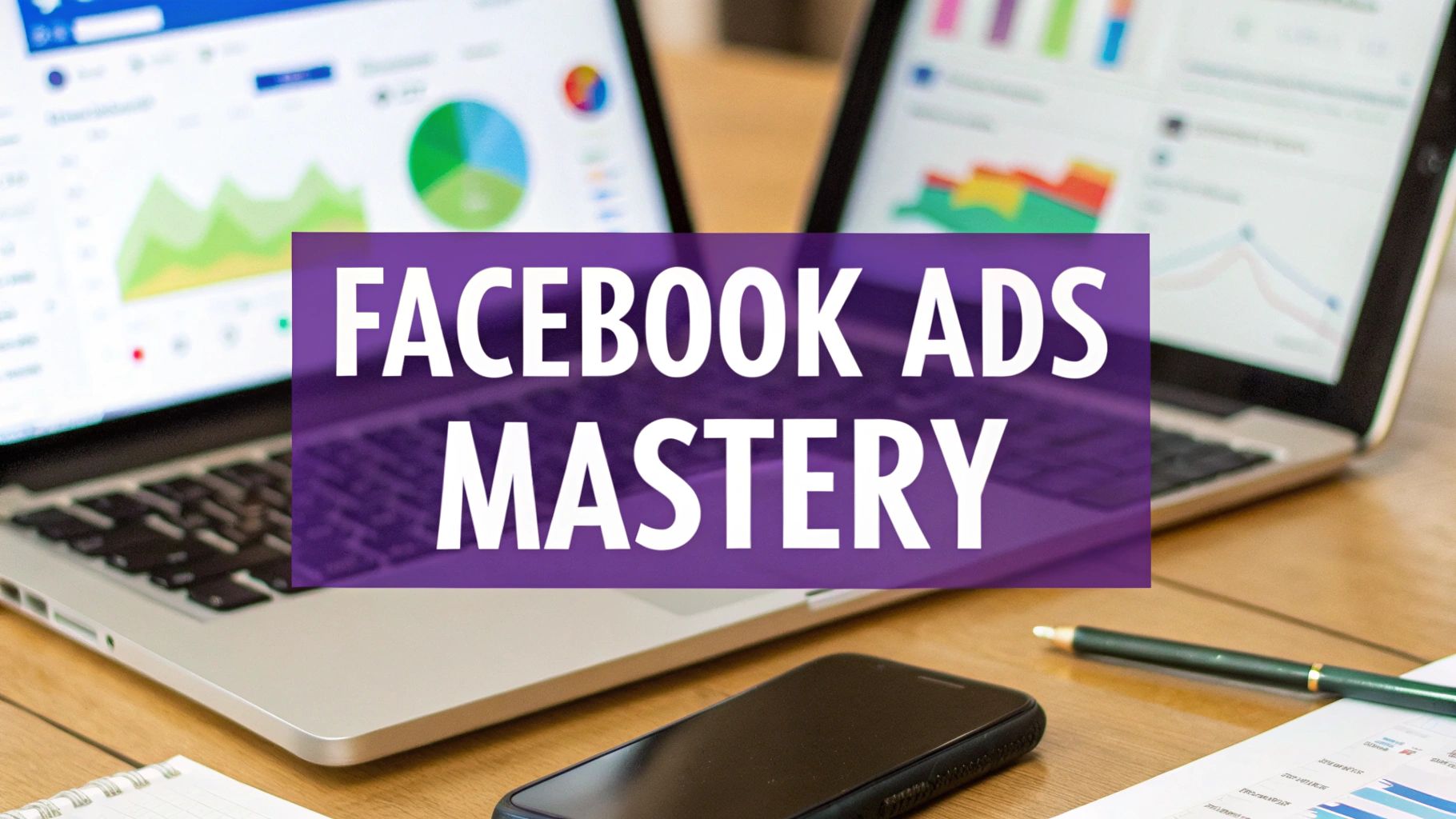8 Best Practice Facebook Ads Strategies for 2025
Navigating the Facebook Ads landscape requires more than just a budget; it demands a strategic, data-driven approach. With millions of businesses competing for attention, simply launching a campaign isn't enough to guarantee results. Success now hinges on implementing proven techniques that optimize every component, from pinpoint audience targeting and compelling creative to efficient bidding and seamless landing page experiences. Without a solid framework, ad spend can easily be wasted, leading to poor returns and missed growth opportunities.
This guide cuts through the noise. We have compiled a comprehensive roundup of the essential best practice Facebook ads that form the bedrock of high-performing campaigns. Think of this as your blueprint for turning ad spend into measurable outcomes. We will cover critical areas including advanced audience segmentation, creative testing protocols, strategic budget allocation, and precise conversion tracking.
Whether you're aiming to generate high-quality leads, drive e-commerce sales, or build lasting brand awareness, mastering these core principles is non-negotiable. Implementing these strategies will empower you to maximize your return on ad spend (ROAS), outmaneuver competitors, and achieve sustainable, scalable growth. Let’s dive into the actionable insights that will elevate your advertising efforts from average to exceptional.
1. Mastering Audience Targeting and Custom Audience Creation
The most compelling ad creative in the world will fail if it doesn't reach the right people. This is why mastering audience targeting stands as a foundational best practice for Facebook ads. It’s the process of using Meta's sophisticated tools to define and connect with users most likely to be interested in your products or services, ensuring your ad spend delivers maximum impact.
At the heart of advanced targeting are Custom and Lookalike Audiences. Instead of relying solely on broad interest-based targeting, you can upload your existing customer lists or use the Meta Pixel to create dynamic audiences based on specific website actions, such as visiting a pricing page or adding an item to the cart. This allows for highly effective retargeting campaigns that re-engage warm leads.
Key Targeting Strategies and Implementation
To implement this effectively, focus on building three core audience types:
- Custom Audiences: These are built from your own data. For example, an e-commerce brand can create a custom audience of everyone who abandoned their shopping cart in the last 30 days and show them a special discount ad. A SaaS company could retarget visitors who watched 75% of a product demo video.
- Lookalike Audiences: Once you have a high-quality Custom Audience (like your best customers), Meta can find new users with similar characteristics. You can test different similarity percentages; a 1% lookalike is highly targeted, while a 10% lookalike offers broader reach.
- Exclusion Audiences: Just as important as who you target is who you don't target. Exclude existing customers from your top-of-funnel acquisition campaigns to avoid wasting budget on people who have already converted.
The following concept map visualizes the relationship between these core audience types and how they stem from a central targeting strategy.
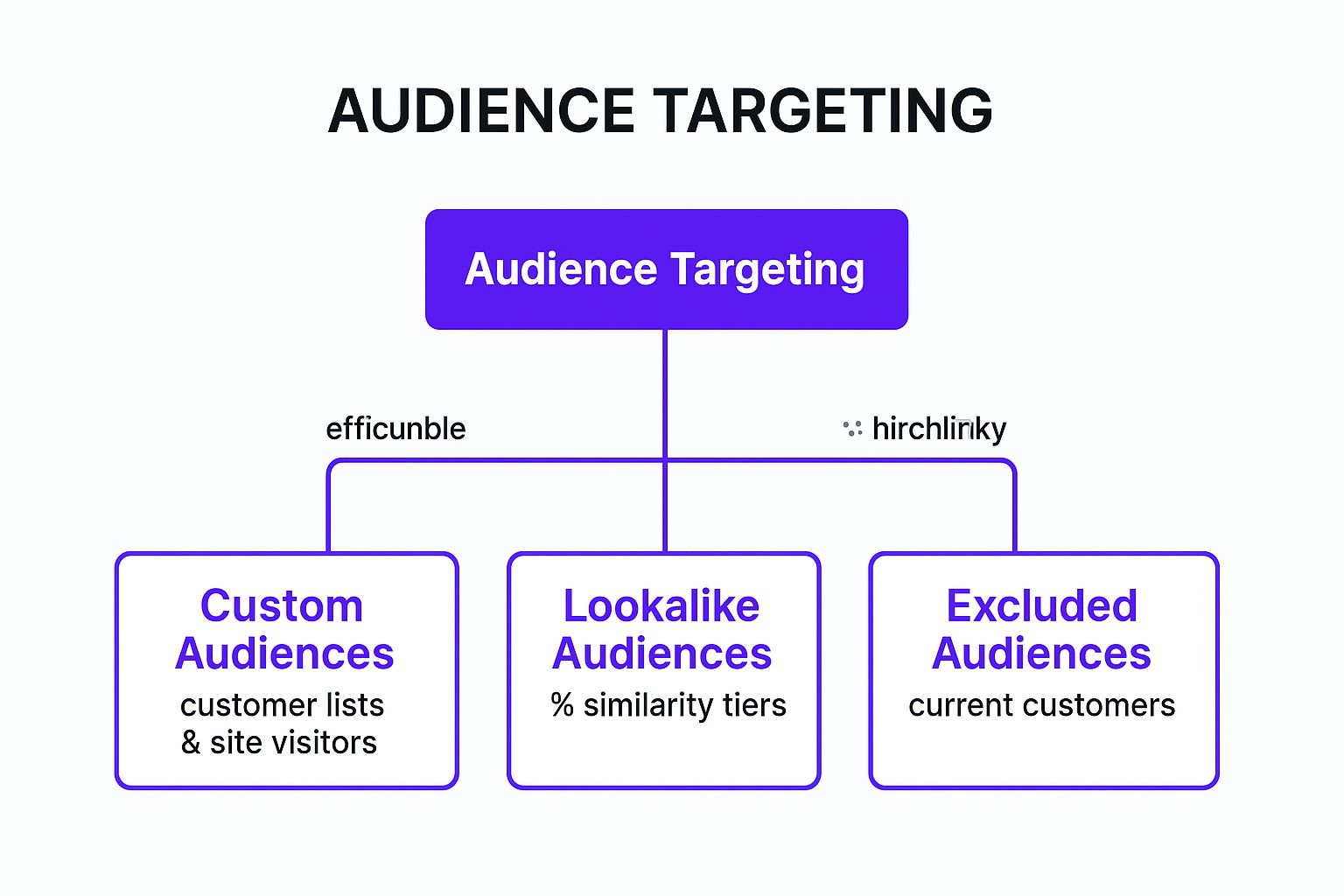
This visualization highlights how a successful strategy integrates these different audience types to create a full-funnel approach, from acquisition to retention. To dive deeper into segmenting your user base for more precise ad campaigns, you can explore detailed customer segmentation strategies. Learn more about advanced customer segmentation on rebusadvertising.com.
2. Compelling Visual Content and Creative Testing
In a crowded social media feed, your ad's visual is the first and most critical element to capture attention. This is why creating compelling visual content and implementing a rigorous creative testing process is a cornerstone best practice for Facebook ads. It’s about producing eye-catching images and videos that stop users mid-scroll and communicate your value proposition almost instantly, ensuring your message breaks through the noise.
Effective creative goes beyond just aesthetics; it must align with your brand, resonate with your target audience, and be designed for the platform. Brands like Dollar Shave Club achieved viral success with videos that blended humor and clear product benefits, while Airbnb leverages authentic, user-generated photos to build trust and sell experiences. These examples underscore the power of visuals that connect on an emotional and practical level.
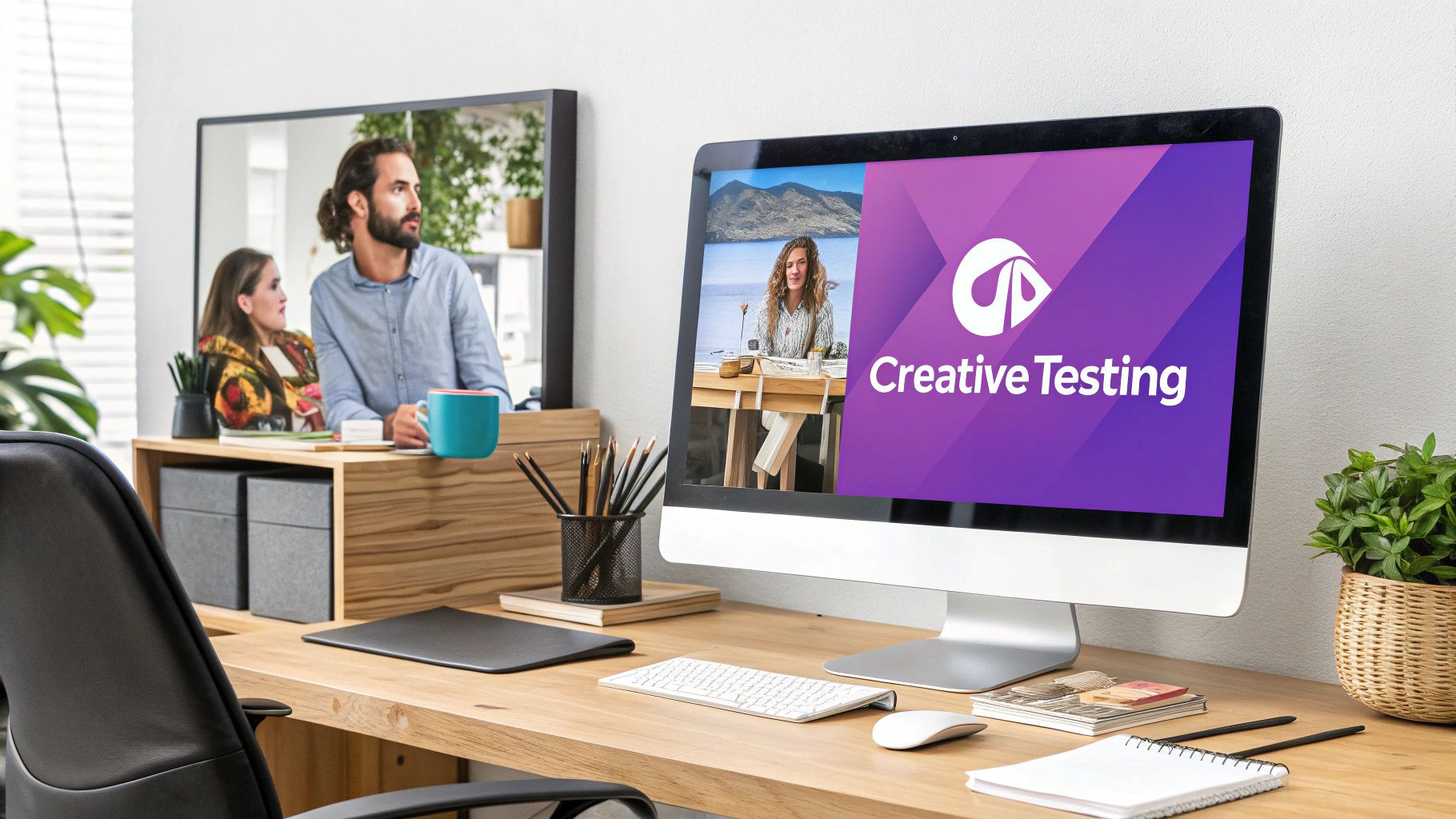
Key Creative and Testing Strategies
To prevent ad fatigue and continuously improve performance, a structured testing approach is essential. This involves systematically trying different creative elements to identify what resonates most with your audience.
- Test Different Formats: Don't rely on a single format. Pit single images against carousels and videos. Test static images against short, animated GIFs. Each format appeals to different user preferences and consumption habits.
- Isolate Variables: To get clear results, test one element at a time. For instance, use the same ad copy and headline but test three different images. Once you find a winning image, use it as your control while you test different headlines.
- Vary Creative Concepts: Test entirely different angles. An ad for a skincare product could test a benefit-driven creative (showing clear skin) against an ingredient-focused creative (highlighting natural components) or a social-proof creative (featuring customer testimonials).
- Refresh Winning Ads: Even the best ads suffer from fatigue. Once you identify a top-performing creative, create several variations with minor changes like different background colors, models, or text overlays to extend its lifespan.
The video below offers further insights into developing a strong creative strategy for your campaigns.
By continuously testing and iterating, you build a library of proven creative assets that can be deployed to drive consistent results. To explore how to integrate these creative strategies into broader campaigns, you can find more information about paid social advertising solutions.
3. Strategic Campaign Objective Selection
Choosing the right campaign objective is one of the most critical decisions you will make, as it directly tells Meta's algorithm what you want to achieve. This choice isn't just a label; it’s a foundational best practice for Facebook ads that dictates how your ads are delivered and optimized. By selecting an objective, you are defining your campaign's primary goal, which enables the platform to find users most likely to take that specific action.
Meta organizes its campaign objectives into three main categories that mirror the marketing funnel: Awareness, Consideration, and Conversion. For example, an e-commerce store launching a new product line might start with a Brand Awareness campaign to generate initial buzz. A real estate agency, on the other hand, would likely use a Lead Generation objective to collect contact information from interested homebuyers, aligning the ad's function directly with a tangible business outcome.
Key Objective Strategies and Implementation
To implement this effectively, you must align your objective with your Key Performance Indicators (KPIs) for each specific campaign.
- Awareness Objectives (Brand Awareness, Reach): Use these when your goal is to introduce your brand to a new audience or stay top-of-mind. A local restaurant might use the Reach objective to ensure as many people as possible within a 5-mile radius see their ad for a new lunch special.
- Consideration Objectives (Traffic, Engagement, Video Views, Lead Generation): Select these to encourage users to interact with your brand. A SaaS company could use a Video Views objective on a product demo, then create a custom audience of viewers to retarget with a free trial offer.
- Conversion Objectives (Conversions, Catalog Sales): These are designed to drive specific actions like purchases or sign-ups. An online retailer should use the Conversions objective optimized for "Purchase" during a holiday sale to maximize revenue, provided their Meta Pixel has sufficient data.
The following concept map visualizes how campaign objectives align with the traditional marketing funnel, guiding users from initial awareness to the final conversion.
This visualization clarifies how each objective serves a distinct purpose in moving a potential customer through their journey. For a deeper understanding of how these objectives fit into a broader marketing framework, explore comprehensive resources on full-funnel advertising strategies. Learn more about building a marketing funnel on hubspot.com.
4. Conversion Tracking and Facebook Pixel Implementation
Effective advertising relies on data, and without accurate tracking, you're essentially flying blind. This is why proper conversion tracking stands as a non-negotiable best practice for Facebook ads. It involves using tools like the Meta Pixel and Conversions API to monitor user actions on your website, allowing you to measure campaign performance, understand the customer journey, and attribute results directly to your ad spend.
At its core, tracking connects ad views and clicks to valuable business outcomes. When a user who saw your ad makes a purchase, signs up for a trial, or fills out a lead form, these tools report that "conversion" back to Meta. This data is critical for optimizing your campaigns, as it enables Meta's algorithm to find more users likely to perform the same actions, thereby improving your return on investment.
Key Tracking Strategies and Implementation
To implement robust tracking, you must focus on creating a reliable data connection between your website and Meta's platform:
- Meta Pixel and Conversions API: The Meta Pixel is a snippet of code on your website that tracks user behavior. The Conversions API works alongside it, sending data directly from your server to Meta's. Using both together creates a more resilient tracking setup that captures more events, especially in light of browser restrictions and ad blockers.
- Standard and Custom Events: Set up standard events like ViewContent, AddToCart, and Purchase to track the typical e-commerce funnel. For unique business goals, create custom conversions. For instance, a consultant could create a custom conversion for "Booked a Consultation" to optimize campaigns specifically for that high-value action.
- Regular Audits: Data accuracy is paramount. Regularly use tools like the Facebook Pixel Helper browser extension and the Events Manager in Meta Ads Manager to test that your events are firing correctly. This ensures your optimization and reporting are based on clean, reliable data.
By prioritizing accurate conversion tracking, you transform your advertising from a guessing game into a data-driven science. It’s the foundational step required to calculate true ROI and make informed decisions that scale your business. Learn more about installing the Meta Pixel via Shopify.
5. Budget Optimization and Bid Strategy Management
Even with the right audience and creative, a campaign can falter without smart financial management. This is why mastering budget optimization and bid strategies is a critical best practice for Facebook ads. It involves strategically allocating your ad spend and selecting the right bidding approach to maximize your return on investment (ROI) within Facebook's dynamic auction environment.
Effective management ensures your budget is distributed efficiently across your best-performing ad sets and audiences. It hinges on understanding tools like Campaign Budget Optimization (CBO), which automatically allocates your budget in real-time, and choosing bid strategies that align with your specific campaign goals, whether that’s maximizing conversions or controlling acquisition costs.
Key Budget and Bidding Strategies
To implement this effectively, you must align your budget allocation and bidding model with your campaign objectives and account maturity:
- Campaign Budget Optimization (CBO): This is ideal for allowing Meta’s algorithm to find the best opportunities across your ad sets. For example, a lead generation company can use CBO to automatically shift spending toward the audience segment that is generating the most cost-effective leads. You can also set minimum spend limits on certain ad sets to ensure they receive a portion of the budget.
- Bid Strategy Selection: Choosing the right bid strategy is crucial. A new campaign might start with "Lowest Cost" to gather data, while a mature e-commerce brand running a Black Friday sale might use a "Cost Cap" to ensure each purchase remains profitable. An app install campaign could use a "Bid Cap" to control the maximum cost per new user.
- Strategic Budget Pacing: How you spend your budget matters. Avoid making drastic budget increases, as this can reset the learning phase. Instead, increase budgets gradually. For time-sensitive promotions, like a weekend flash sale, use lifetime budgets to ensure even delivery and prevent spending the entire budget on the first day.
6. Ad Copy Optimization and A/B Testing
Even with the perfect audience and a stunning visual, your ad will underperform if the copy doesn't connect. Ad copy optimization is a crucial best practice for Facebook ads that involves crafting and testing compelling, benefit-focused messaging to persuade your audience to take action. It bridges the gap between capturing attention and converting that interest into a click, a lead, or a sale.
Effective copy goes beyond simply describing a product; it communicates value and solves a problem for the user. Through systematic A/B testing, advertisers can experiment with different headlines, primary text, and calls-to-action (CTAs) to discover the precise language that resonates most powerfully with their target segments. This iterative process ensures your message is not just seen but felt, driving higher conversion rates and a better return on ad spend.
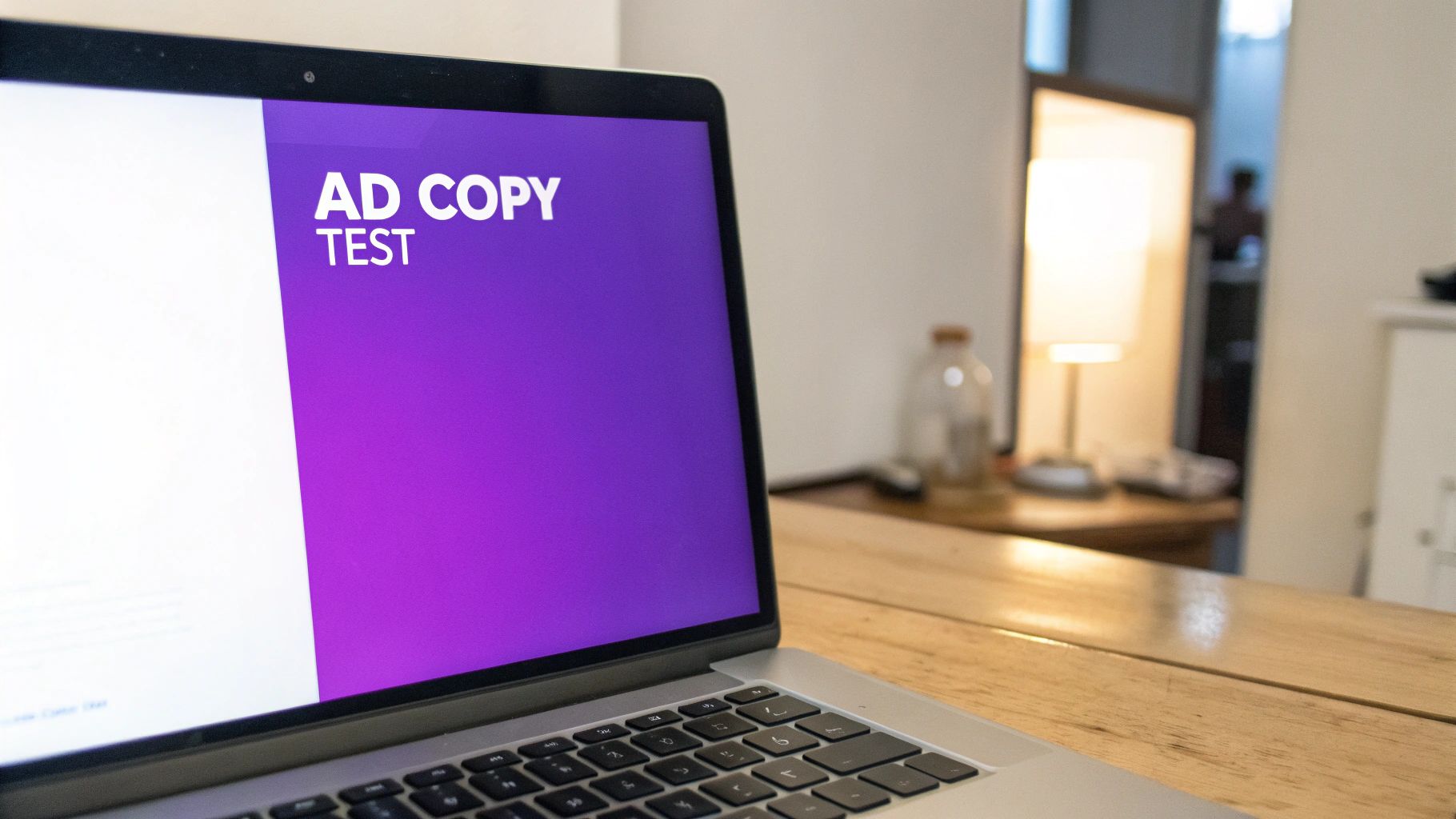
Key Copywriting Strategies and Implementation
To implement this effectively, focus on a structured testing approach and benefit-driven messaging:
- Lead with Benefits, Not Features: Your headline should immediately answer the user's question, "What's in it for me?" For example, instead of saying "Our CRM has AI integration," Grammarly's copy focuses on the benefit: "Write with confidence and achieve your goals." This frames the product as a solution.
- Incorporate Social Proof and Urgency: Build trust and encourage immediate action by including elements like customer counts, star ratings, or testimonials. You can also create urgency with phrases like "Limited-time offer" or "Only 3 spots left" to combat user hesitation.
- Systematically Test Ad Copy Elements: Don't change everything at once. Isolate variables to understand what works. Test a benefit-driven headline against a question-based headline. Pit a "Shop Now" CTA against a "Learn More" button to see which drives more qualified traffic for your specific campaign goal.
- Optimize for Mobile-First Consumption: Most users will see your ad on a mobile device. Keep primary text concise and scannable, placing the most important information in the first few lines before the "See more" link.
This infographic illustrates the core components of an ad that can be tested to refine your messaging. By isolating and improving each part, you can systematically enhance your ad’s overall performance. For more in-depth guidance on crafting persuasive copy, consider exploring the principles laid out by direct-response experts. Learn more about conversion-focused copywriting at copyhackers.com.
7. Landing Page Alignment and User Experience Optimization
Even the most optimized Facebook ad campaign will fail if it sends high-intent traffic to a disjointed or slow landing page. This is why landing page alignment stands as a critical best practice for Facebook ads. It involves creating a seamless transition from the ad to the landing page, ensuring the message, visuals, and offer remain consistent, thereby maximizing conversions and preventing wasted ad spend.
A poor user experience on your landing page can instantly negate the effectiveness of your ad creative and targeting. When a user clicks an ad, they have a clear expectation. If the subsequent page has a different headline, a confusing layout, or takes too long to load, they will likely bounce. This increases your cost-per-acquisition and signals to Meta that your ad provides a low-quality experience.
Key Alignment Strategies and Implementation
To implement this effectively, focus on creating a frictionless path from click to conversion:
- Message and Visual Match: Your landing page headline should mirror or closely match the ad's primary text or headline. Similarly, use the same key imagery, color schemes, and brand elements. For example, if your ad features a person using a product, that same image should be prominent on the landing page.
- Mobile-First Optimization: The majority of Facebook users are on mobile, so your landing page must be designed for a fast, intuitive mobile experience. This means ensuring it loads in under three seconds and that call-to-action buttons are large and easy to tap. SaaS companies like HubSpot often use progressive forms on mobile to reduce initial friction.
- Conversion-Focused Design: A dedicated landing page should have a single goal. Remove distracting elements like navigation menus, social media links, or unrelated offers. As popularized by platforms like Unbounce, the page should guide the user toward one specific action, such as filling out a form or making a purchase, with the conversion element placed clearly "above the fold."
This focused approach ensures the user's journey is intuitive and guided, directly translating the interest generated by the ad into a tangible business outcome. To further enhance your pages for conversions, you can explore a variety of dedicated tools. Learn more about powerful conversion rate optimization tools on rebusadvertising.com.
8. Leveraging Ad Placements for Optimal Performance
Where your ads appear is just as crucial as who sees them. Leveraging ad placements is a core best practice for Facebook ads that involves strategically selecting the specific locations across Meta’s network where your ads are shown. Instead of letting the algorithm place ads everywhere by default, this practice allows you to align your creative with the user experience of each platform, from Facebook feeds to Instagram Stories and the Audience Network.
Controlling placements ensures your ad creative is formatted correctly for its environment, preventing awkward cropping or mismatched dimensions that can harm performance. It also allows you to allocate your budget to the placements that deliver the best results for your specific campaign goals, whether that's brand awareness, lead generation, or sales.
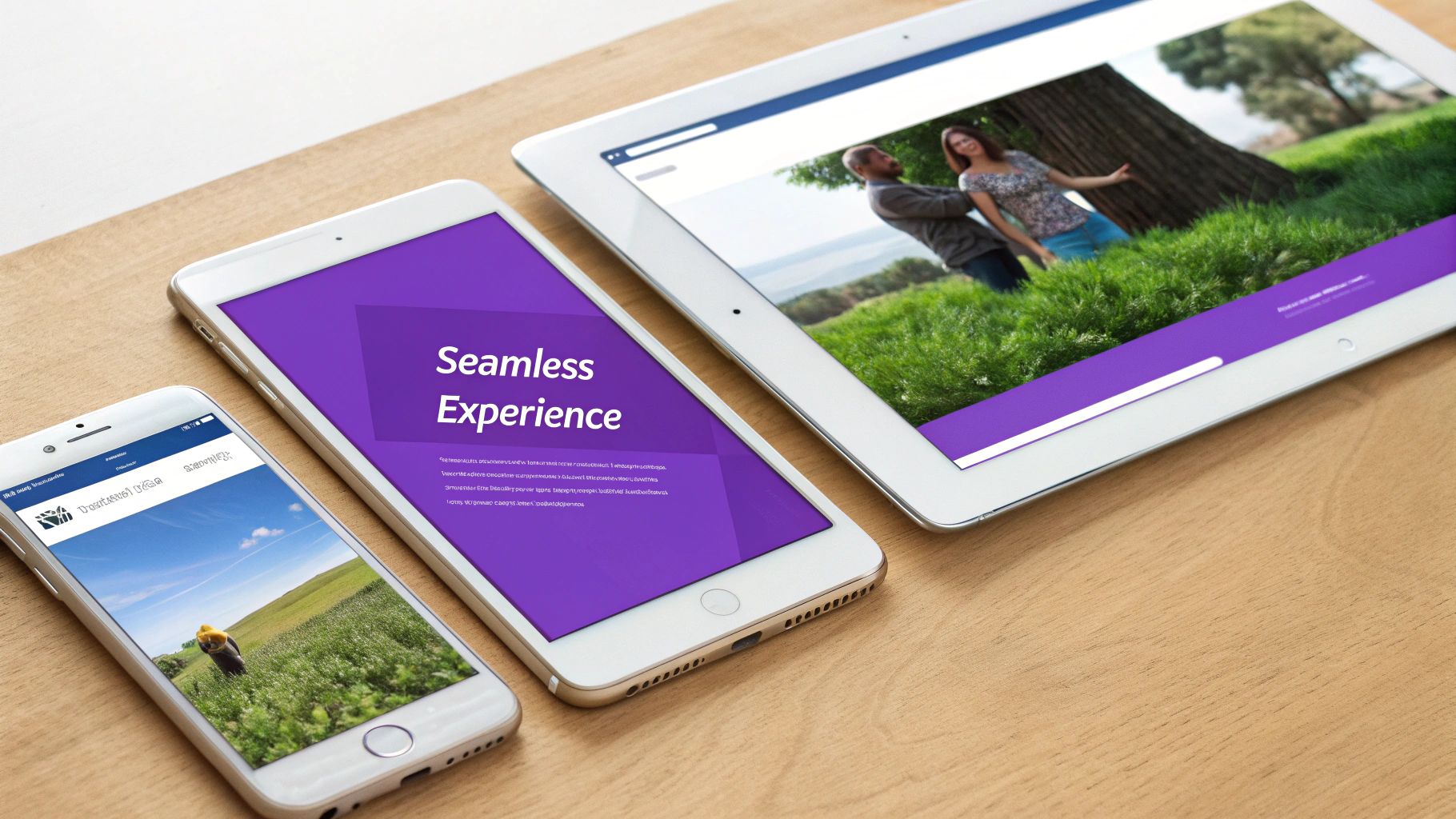
Key Placement Strategies and Implementation
To implement this effectively, move beyond the default "Advantage+ Placements" and consider a more tailored approach based on your campaign objectives and creative assets.
- Align Creative with Placement: Design creative specifically for the placement's native format. For example, use vertical video (9:16 aspect ratio) for Instagram Stories and Reels, and a high-quality square or landscape image for Facebook and Instagram feeds. Mismatched creative is a common reason for poor performance.
- Analyze Placement Performance: Use the "Breakdown" feature in Ads Manager to see which placements are driving the best results. If you find that the Audience Network is spending a lot of budget with low conversion rates, you can exclude it to reallocate funds to higher-performing spots like Instagram Feed.
- Test Placement-Specific Campaigns: For a more advanced strategy, create separate ad sets targeting different placements. This gives you maximum control over bidding and budgeting, allowing you to optimize a campaign specifically for Stories and another for Feeds, ensuring each is perfectly tuned for its context.
By thoughtfully selecting and optimizing your ad placements, you can significantly improve user experience, increase engagement rates, and achieve a better return on your ad spend.
8-Point Best Practice Comparison for Facebook Ads
| Audience Targeting and Custom Audience Creation | Medium to High - requires data collection and setup | Moderate - data tools like Pixel, CRM needed | High relevance, better engagement, lower CPA | Businesses with customer data aiming for precise targeting | Personalized messaging, detailed audience insights |
|---|---|---|---|---|---|
| Compelling Visual Content and Creative Testing | Medium to High - ongoing creative production | High - content creation and testing resources | Increased engagement and brand recognition | Brands needing standout visuals and constant creative refresh | Reduces ad fatigue, data-driven creative optimization |
| Strategic Campaign Objective Selection | Low to Medium - selecting objectives per campaign | Low - mostly setup and strategic planning | Optimized ad delivery aligned with goals | Any advertiser optimizing conversion, awareness, or leads | Clear performance measurement, algorithm alignment |
| Conversion Tracking and Facebook Pixel Implementation | High - technical setup and maintenance | Moderate to High - tech resources required | Accurate ROI measurement and customer journey insights | E-commerce, SaaS, lead gen needing precise tracking | Enables advanced optimization and retargeting |
| Budget Optimization and Bid Strategy Management | Medium - understanding bidding and budget controls | Moderate - requires spending data and monitoring | Better spend efficiency and predictable cost control | Accounts scaling campaigns while managing cost-efficiency | Automated budget distribution, reduces manual workload |
| Ad Copy Optimization and A/B Testing | Medium - iterative testing of multiple copy versions | Moderate - copywriting effort and testing time | Higher click-through and conversion rates | Campaigns focusing on messaging and audience engagement | Cost-effective performance boost, insights on customer motives |
| Landing Page Alignment and User Experience Optimization | Medium to High - design and technical optimization | High - landing page development and testing | Higher conversion rates, lower bounce rates | Campaigns needing seamless journey from ad to landing page | Improves Quality Scores, enhances brand credibility |
Integrating These Practices for Unstoppable Growth
Navigating the landscape of Facebook advertising can feel like trying to hit a moving target. Yet, as we've explored, success isn't about chasing fleeting trends or discovering a single hidden secret. It’s about building a robust, interconnected system where each component amplifies the others. Mastering the best practice Facebook ads detailed in this guide means moving beyond isolated tactics and embracing a holistic strategy.
Think of it as a high-performance engine. Your laser-focused audience targeting is the fuel, but it's useless without the spark of compelling creative. Your strategic campaign objective sets the destination, while precise conversion tracking with the Facebook Pixel provides the GPS, telling you if you're on the right path. Each element, from budget optimization and A/B tested copy to a seamless landing page experience, works in concert to drive performance.
From Individual Tactics to a Cohesive System
The true power of these practices is unlocked when they are integrated.
- Targeting informs creative: When you deeply understand your Custom and Lookalike Audiences, you can craft visuals and copy that resonate on a profound level.
- Tracking validates strategy: Accurate data from your Pixel doesn't just measure results; it provides the crucial feedback needed to refine your bidding strategies and reallocate your budget for maximum impact.
- Copy and landing pages work together: World-class ad copy generates the click, but a perfectly aligned and user-friendly landing page is what secures the conversion. A disconnect between the two is one of the most common and costly mistakes.
By consistently applying this framework, you transform your advertising efforts from a guessing game into a predictable, scalable growth machine. You stop simply spending money and start making strategic investments that deliver a measurable return. The digital advertising ecosystem will undoubtedly continue to evolve, with new features and algorithm updates just around the corner. However, a mastery of these foundational principles provides you with the agile framework needed to adapt, test, and thrive amidst any change. This is how you build a resilient advertising strategy that stands the test of time.
Ready to turn these expert insights into tangible results without the steep learning curve? The team at Rebus specializes in implementing every facet of a high-performing paid media strategy, from advanced audience segmentation to creative production and conversion optimization. Partner with us to transform your Facebook ad account into a powerful engine for sustained revenue growth. Schedule your free strategy session with Rebus today.
